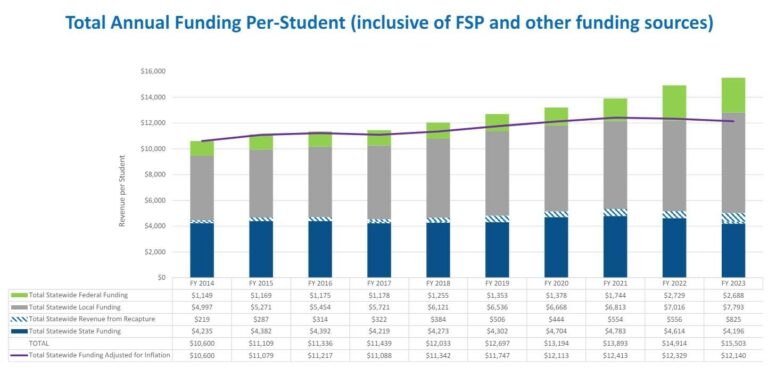Texas Secures Historic $8.5 Billion Boost for Public Education
In a rare display of bipartisan cooperation, Texas legislators have agreed to a substantial $8.5 billion increase in funding dedicated to public schools over the next two years. This landmark investment targets critical areas such as educator compensation, school safety enhancements, and modernization of facilities, responding to the urgent demands of a rapidly expanding student body. This funding surge represents one of the most significant educational appropriations in recent Texas history, signaling a unified commitment to strengthening the state’s educational infrastructure ahead of the upcoming legislative session.
Comprehensive Funding Breakdown: Priorities and Allocations
The newly approved budget package is designed to tackle persistent inequities and resource gaps across Texas schools. A major focus is on increasing teacher pay to attract and retain quality educators, alongside expanding mental health support and upgrading technology in districts that have historically been underfunded. Additionally, the plan emphasizes early childhood education and infrastructure improvements to create safer, more conducive learning environments.
| Funding Category | Allocated Amount | Intended Use |
|---|---|---|
| Teacher Compensation | $3.2 billion | Salary increases and retention incentives |
| Technology Enhancements | $1.5 billion | Provision of devices and broadband expansion |
| Mental Health Resources | $1 billion | Increased counseling and support personnel |
| Early Childhood Education | $1.8 billion | Expansion of Pre-K programs and literacy initiatives |
| Facility Upgrades | $1 billion | Renovations and enhanced safety measures |
Transformative Effects on Texas Public Schools
This unprecedented funding injection is set to revolutionize educational opportunities across Texas. By addressing teacher shortages through competitive pay raises, schools can expect improved staff retention and recruitment. The investment also targets reducing classroom sizes, upgrading STEM and vocational training facilities, and expanding bilingual and special education services to ensure inclusivity and equity.
Notable impacts anticipated from the funding include:
- Competitive teacher salaries to mitigate turnover and attract skilled educators.
- Broadened early childhood education access to enhance readiness for kindergarten and beyond.
- Modernized STEM and career training centers to equip students with skills for the evolving job market.
| Focus Area | Expected Outcome |
|---|---|
| Technology Access | Achieving a one-to-one student-to-device ratio |
| Special Education | Expanded support staff and resources |
| Early Learning Programs | Increased enrollment and program availability |
Strategies for Successful Execution and Accountability
Experts stress that the success of this historic funding depends heavily on transparent and effective oversight. Establishing clear reporting frameworks will allow educators, parents, and policymakers to track how funds are utilized and measure progress against defined educational goals. Independent audits and regular public updates will be crucial in maintaining accountability and ensuring that investments translate into tangible improvements.
Recommended best practices include:
- Robust data monitoring: Implementing measurable indicators linked to student achievement and program effectiveness.
- Focused professional development: Allocating resources for ongoing training to equip educators with skills to leverage new programs.
- Creation of a bipartisan oversight committee: Engaging diverse stakeholders to guide and review implementation efforts.
- Community engagement: Hosting regular forums to gather feedback and foster transparency.
| Oversight Component | Recommended Action |
|---|---|
| Transparency | Quarterly financial and performance reports |
| Accountability | Independent compliance audits |
| Stakeholder Involvement | Monthly meetings with educators, parents, and officials |
| Capacity Building | Ongoing teacher training and support programs |
Conclusion: A Pivotal Step Toward Educational Excellence in Texas
The bipartisan agreement to allocate $8.5 billion toward Texas public schools represents a transformative investment in the state’s educational future. By addressing critical areas such as teacher pay, infrastructure, and student support services, this funding package lays the groundwork for improved academic outcomes and equitable opportunities for all students. As implementation unfolds, vigilant oversight and community involvement will be essential to ensure these resources effectively enhance learning environments across Texas. This milestone funding deal highlights education as a central priority in the state’s fiscal planning, promising meaningful progress in the years ahead.




